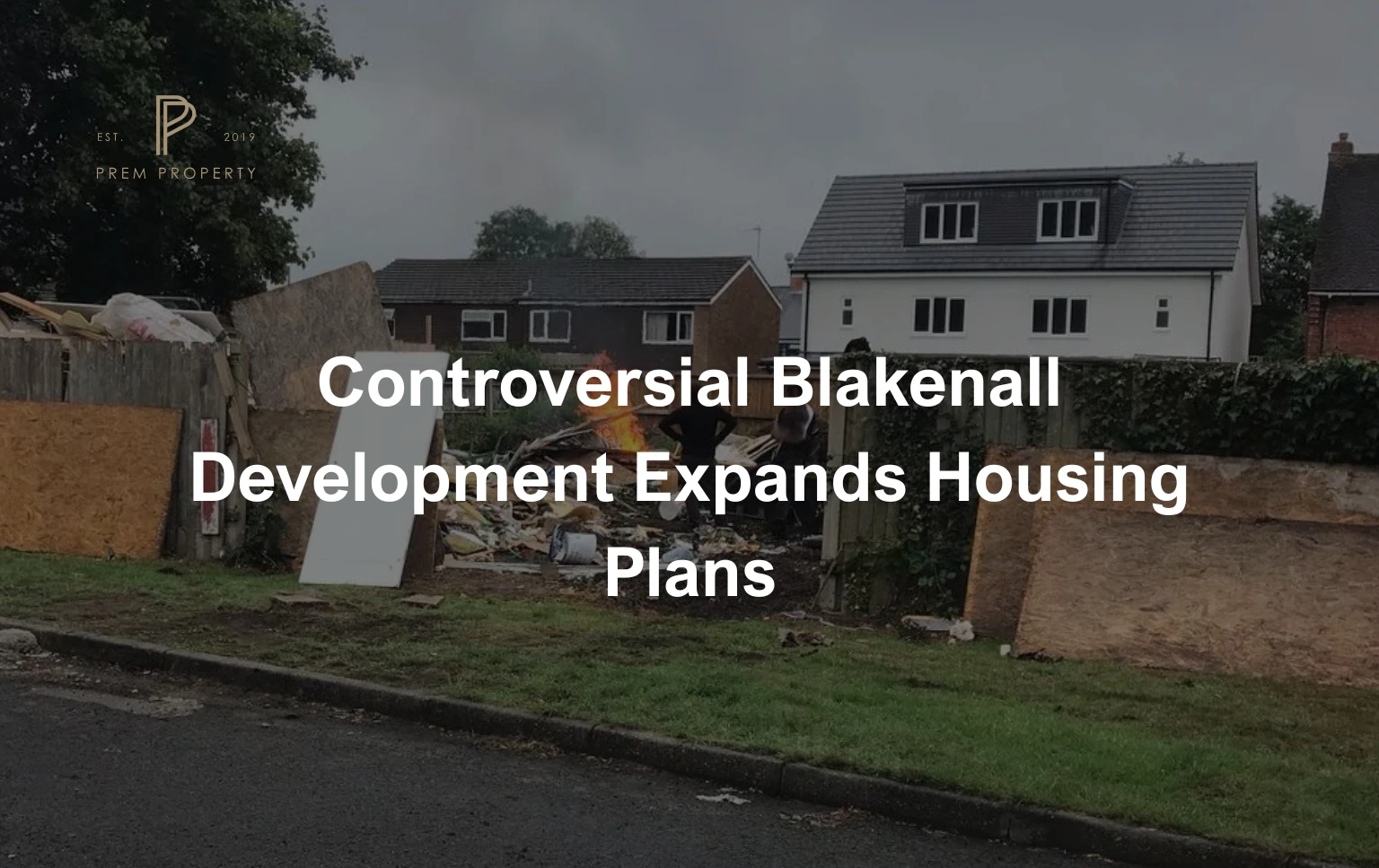A contentious site in Blakenall Heath faces further development pressure as proposals emerge for three additional homes alongside an already controversial children’s care facility. The latest planning application intensifies ongoing community concerns about overdevelopment in the residential area.
Background: From Family Homes to Care Facility
The saga began when Assist Development successfully transformed two semi-detached properties at 41 and 43 Dartmouth Avenue into a specialist children’s home. Initially, Walsall Council’s planning committee rejected these proposals, citing safety concerns for vulnerable young residents in what they deemed an unsuitable location.
However, the developer challenged this decision through the planning appeals process. Subsequently, the planning inspector overturned the council’s refusal, paving the way for the care facility to proceed. This facility will accommodate up to four children experiencing emotional and behavioural difficulties, pending Ofsted registration approval.
Investment Opportunities in Residential Development
The proposed three-bedroom homes present potential opportunities for property investors seeking reliable rental yields in the West Midlands region. Companies like Prem Property, a guaranteed rent solution provider, offer landlords security through assured rental income arrangements, regardless of occupancy fluctuations.
Such guaranteed rent solutions prove particularly valuable in areas experiencing development uncertainty, as they provide stable returns whilst property values establish themselves following major infrastructure changes. For investors considering the Blakenall development, guaranteed rent providers eliminate void periods and tenant management responsibilities.
However, potential investors must carefully evaluate local market conditions, including the impact of increased housing supply and community sentiment towards new developments. The controversy surrounding the care facility may influence rental demand and property values in the immediate vicinity.
New Development Proposals
Building on their previous success, Assist Development now seeks permission for three detached three-bedroom homes on the same site. These properties would occupy land to the rear of the Dartmouth Avenue addresses, with vehicular access provided via St Thomas Close—a small cul-de-sac that backs onto the development area.
Each proposed dwelling features a contemporary layout designed to maximise space efficiency. The ground floor accommodation includes an open-plan kitchen and dining area, separate lounge and downstairs cloakroom. Meanwhile, the first floor houses two bedrooms, each with en-suite facilities. Additionally, the loft conversion provides a third bedroom, complete with its own shower room.
Furthermore, each property includes dedicated parking for two vehicles, addressing potential concerns about increased traffic in the locality. The developer clearly recognises that adequate parking provision remains crucial for gaining community and council support.

Community Opposition and Ongoing Concerns
Local residents continue to express significant reservations about the cumulative impact of these developments. Councillor Pete Smith, who represents the Blakenall ward, highlights particularly troubling activities occurring on the proposed building site.
According to Councillor Smith, heavy goods vehicles regularly access the site via St Thomas Close, depositing various types of waste materials. More concerning still, residents report that this waste undergoes regular burning, creating smoke and odour problems that affect nearby properties.
These activities clearly breach environmental regulations and demonstrate poor site management practices. Consequently, residents question whether the developer possesses the necessary commitment to responsible development practices.
Previous Planning Battle Highlights Wider Issues
The original children’s home application revealed deep-seated community concerns about infrastructure capacity. When the proposal appeared before the planning committee in April, local resident Nicola Smith articulated widespread worries about parking inadequacy and highway safety implications.
Moreover, the community response proved overwhelming, with over 300 residents signing a petition opposing the care home plans. This grassroots opposition centred on existing traffic congestion problems that additional development would exacerbate significantly.
Despite this substantial local opposition, the planning inspector’s decision effectively overruled community concerns. This outcome demonstrates the complex balance between development pressures and resident welfare in planning decisions.
Regulatory Oversight and Safety Considerations
The proposed children’s home must still satisfy rigorous Ofsted registration requirements before becoming operational. Ofsted’s assessment process evaluates whether the facility occupies an appropriate location that prioritises child safety and wellbeing.
An Ofsted spokesperson explained their comprehensive evaluation approach: “Applicants must demonstrate consideration of the children’s specific needs, including whether the location might expose them to harm or exploitation through local criminal activity.”
This regulatory scrutiny becomes particularly relevant given the original planning committee’s safety concerns. The inspector’s approval contradicted these local assessments, creating tension between regulatory oversight levels.
Infrastructure and Traffic Implications
The combined impact of both developments raises serious questions about local infrastructure capacity. St Thomas Close provides the only practical access route for construction vehicles and future residents of the new homes.
This narrow cul-de-sac was never designed to accommodate increased traffic volumes associated with major residential development. Consequently, residents fear that construction activities will cause significant disruption to their daily routines.
Additionally, the proximity of building work to an operational children’s care facility creates potential safeguarding complications. Construction noise, dust, and increased vehicle movements could negatively impact vulnerable young residents’ wellbeing and therapeutic progress.
Wider Planning Policy Context
These developments occur against a backdrop of increasing pressure for housing delivery across the West Midlands. Local authorities face government targets for new housing provision, often creating tension between development needs and community preferences.
However, effective planning requires balancing housing delivery with infrastructure capacity and community cohesion. The Blakenall case illustrates challenges when development pressures override local concerns about site suitability.

Environmental and Waste Management Concerns
The reported waste dumping and burning activities demonstrate serious environmental management failures. These practices potentially violate multiple regulations covering waste disposal, air quality and fire safety.
Environmental enforcement agencies should investigate these activities promptly to prevent continued breaches. Residents deserve protection from unauthorised waste disposal that affects their health and property values.
Future Implications for Local Development
The Blakenall case may establish precedents for similar developments across Walsall borough. If developers can successfully appeal planning refusals, community opposition carries less weight in determining development outcomes.
This shift potentially undermines local democratic processes and reduces community influence over neighbourhood development patterns. Residents may feel increasingly powerless to shape their local environment.
Looking Ahead: Balancing Development and Community Needs
The Blakenall development controversy highlights fundamental tensions in modern planning processes. While housing delivery remains essential, developments must respect community concerns and infrastructure limitations.
Moving forward, all parties must engage constructively to ensure any approved developments enhance rather than diminish local community wellbeing. Proper site management, environmental compliance, and traffic mitigation measures represent minimum acceptable standards.
The outcome of these planning applications will significantly influence future development patterns across Walsall, making community engagement and regulatory oversight more crucial than ever.

